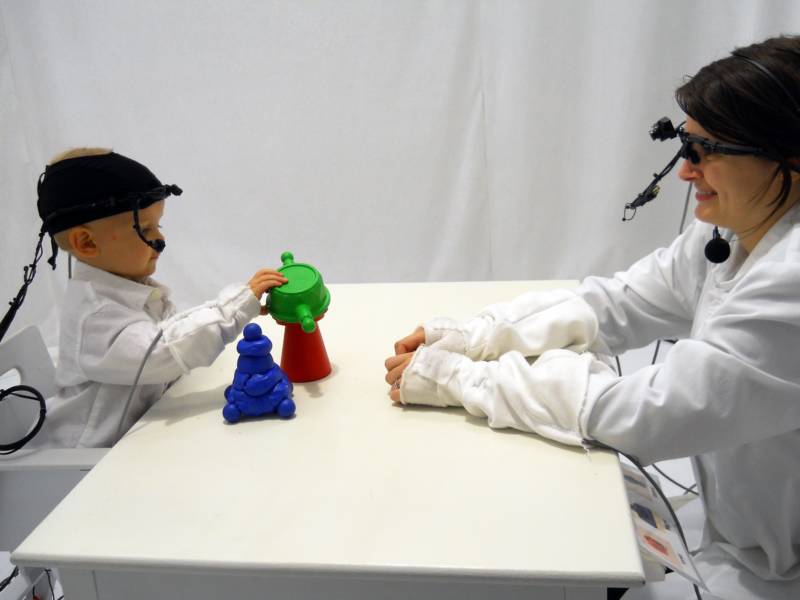The sample consisted of 36 parent-infant duos, with the infants ranging in age from 11 to 13 months.
Most caregivers fell into two primary groups: those who let the children lead the play session and those who tried to direct it. Researchers did not give the parents any specific direction as to how they should interact.
Mutual Gaze Prolongs Babies' Attention Spans
The caregivers who were most successful in sustaining the children’s attention were those who followed a child’s natural interest in a toy and then jumped in by naming the object and encouraging play.
If both a child and parent initially paid attention to the same object for more than 3.6 second, the infant’s gaze lingered an average of 2.3 second, or about four times, longer than the gaze of babies whose parents averted their eyes sooner.
A Moment Makes a Difference
A few seconds may seem inconsequential. But when you multiply a few moments over and over in daily play sessions during a critical stage in mental development, it can make a profound difference, says Chen Yu, who led the study.
"The ability of children to sustain attention is known as a strong indicator for later success in areas such as language acquisition, problem-solving and other key cognitive development milestones."
The team will soon publish follow-up research looking at the children's development at age two. Yu says that study found that children with engaged parents had a larger vocabulary than children with parents who did not. Yu wouldn't disclose how many more words, but he called the difference 'substantial.'
The shortest attention spans in the study were observed in a third group, in which caregivers weren't very engaged with the children. These distracted caregivers tended to sit back and not play along, or simply look elsewhere during the exercise.
"When you've got someone who isn't responsive to a child's behavior," Yu says, "it could be a real red flag for future problems." He cites Attention-Deficit/Hyperactivity Disorder or behavior issues as potential outcomes for kids who don't learn to sustain focus.
Results Counter Traditional Thinking
Historically scientists thought biology was responsible for a child's attention span -- some babies are just born more inclined to stay focused. But the researchers contend their study shows that focus can be influenced and increased through social interaction.
"Showing that what a parent pays attention to minute by minute and second by second actually influences what a child is paying attention to may seem intuitive," said Sam Wass, a University of Cambridge neuroscientist whose commentary appears in the same journal, "but social influences on attention are potentially very important and ignored by most scientists."
